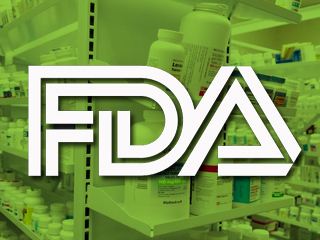Health and Healthcare
Is the Huge Jump in Nanosphere Sustainable?
Published:
Last Updated:
Nanosphere Inc. (NASDAQ: NSPH) was up enough early on Tuesday morning that some investors may have thought it was an acquisition target in the micro-cap biohealth space. It turns out that an U.S. Food and Drug Administration (FDA) approval is the culprit. After shares gapped up 22%, and rose as much 32% before pulling back, 24/7 Wall St. wants to see if the move is sustainable.
For starters, investors and speculators need to understand that this is a true micro-cap stock. Even with double-digit gains, its market cap was a mere $24 million. This stock also had a reverse stock split (one for 20) just in April. In short, this is only for the most speculative sort of investor.
As of June 30, Nanosphere had almost $24 million in cash and equivalents, with total assets of $45.7 million and total liabilities of $22.7 million. Of that nearly $24 million in cash, some $3 million or so was listed as restricted cash.
The news driving Nanosphere higher on Tuesday was that it has received FDA clearance for its Verigene Respiratory Pathogens Flex Nucleic Acid Test (RP Flex) on the automated sample-to-result Verigene System.
Nanosphere noted that this was the first test of its kind that allows the 16 viral and bacterial targets identified by RP Flex to be reported as a full multiplex panel or in various user-defined subsets. While not yet defined financially, it is a health care cost savings opportunity. Nanosphere said that labs pay for only the targets ordered for each patient sample. This flexible panel concept also was said to address the varied respiratory testing needs of labs and clinicians with a single comprehensive and cost-effective solution.
ALSO READ: 5 Top Biotech Stocks That Ran Last Week
Michael McGarrity, Nanosphere’s president and chief executive officer, said:
Verigene RP Flex addresses a previously unmet healthcare need for our laboratory customers by bridging the gap between one-size-fits-all syndromic panels and targeted single-analyte tests. RP Flex puts testing decisions back in the hands of healthcare professionals and allows for optimal clinical and economic utility.
Additional data on the Verigene RP Flex shows it joining Nanosphere’s growing menu of infectious disease tests. These include:
Other data from recent history may play into this move as well.
Nanosphere reported record revenues for the second quarter 2015 on August 10. This grew 76% to $4.7 million, compared to $2.7 million a year earlier, driven by U.S.-based microbiology laboratories’ continued adoption of the Gram Positive (BCGP) and Gram Negative (BCGN) blood culture tests. Nanosphere also confirmed its full-year revenue guidance for 2015 of $18 million to $20 million. Also, gross margins increased to 49% in the second quarter of 2015 from 38% in the second quarter of 2014. Still, the net loss for the second quarter of 2015 was $8.6 million, versus a loss of $10.0 million in the second quarter of 2014.
ALSO READ: 4 New Big FDA Decisions Expected in September
Back on July 31, Nanosphere announced amended terms to its $30 million term loan facility. The company said in that July 31 press release:
Nanosphere entered into the loan facility and immediately drew $20 million under the facility on May 14, 2015. Under the original terms of the loan facility, Nanosphere was subject to a condition precedent and a post-closing covenant that required Nanosphere to raise an aggregate of at least $4 million in net proceeds from equity financings prior to entering into the loan facility and an aggregate of at least $6 million in net proceeds either equity financings or licensing or strategic partnership transactions within eight months of May 14, 2015, pursuant to which Nanosphere raised an aggregate of $8 million in net proceeds from its preferred stock offerings in May and June 2015. Under the amended terms of the loan facility, the lenders have waived the requirement that Nanopshere [sic] raise an additional $2 million in consideration of certain adjustments to the reserve requirements under the loan facility.
The big standout here was that Nanosphere shares jumped massively in October of 2014. That move was very short-lived and is a reverse split-adjusted move now, rising from $10.40 on October 9 to as much as just over $25.00. Then shares were back down and under $10.00 in less than two weeks. Its reverse split was in April of 2015.
After almost two hours of trading Tuesday, Nanosphere shares were up about 15% at $3.10. The big standout was that 7.7 million shares had traded hands, compared with an average daily volume of only about 85,000 shares.
ALSO READ: Merrill Lynch Updates Top Transforming World Stock Picks for 2015
Credit card companies are at war, handing out free rewards and benefits to win the best customers. A good cash back card can be worth thousands of dollars a year in free money, not to mention other perks like travel, insurance, and access to fancy lounges. See our top picks for the best credit cards today. You won’t want to miss some of these offers.
Flywheel Publishing has partnered with CardRatings for our coverage of credit card products. Flywheel Publishing and CardRatings may receive a commission from card issuers.
Thank you for reading! Have some feedback for us?
Contact the 24/7 Wall St. editorial team.